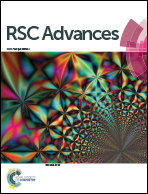Photoluminescence phenomena prevailing in c-axis oriented intrinsic ZnO thin films prepared by RF magnetron sputtering
Abstract
Substantial c-axis orientation of the hexagonal ZnO crystals with wurtzite structure demonstrates only those two preferred peaks in the first-order spectra which are permitted by the Raman scattering selection rule viz., the Ehigh2 and A1 (LO) modes, that identify the improved structural quality of the undoped ZnO film grown by magnetron sputtering in Ar ambient at an RF power of P = 200 W. The presence of a substantial amount of hydroxyl groups attached to the Zn lattice has been correlated to the dominant c-axis orientation of the ZnO crystals which exhibited a distinct UV luminescence band that arises due to the typical exciton emission or near-band-edge emission. At higher applied powers, disorder-activated Raman scattering introduces a well resolved Bhigh1 mode and gradually growing second order Raman peaks, (Ehigh2 − Elow2) and (Bhigh1 − Blow1), which are caused by the breakdown of translational symmetry of the lattice by defects or impurities and lead to deviation from preferred c-axis orientation with I002/I103 < 1. Out diffusion of oxygen from the network creates increasing oxygen vacancy states  and in addition, various other defects e.g., Zn interstitial
and in addition, various other defects e.g., Zn interstitial  , doubly ionized Zn vacancy
, doubly ionized Zn vacancy  and oxygen antisite (OZn) as the dynamic acceptor defects, act as the origins of different visible photoluminescence components classified in the UV-violet, violet, violet-blue, blue and green regions.
and oxygen antisite (OZn) as the dynamic acceptor defects, act as the origins of different visible photoluminescence components classified in the UV-violet, violet, violet-blue, blue and green regions.


 Please wait while we load your content...
Please wait while we load your content...